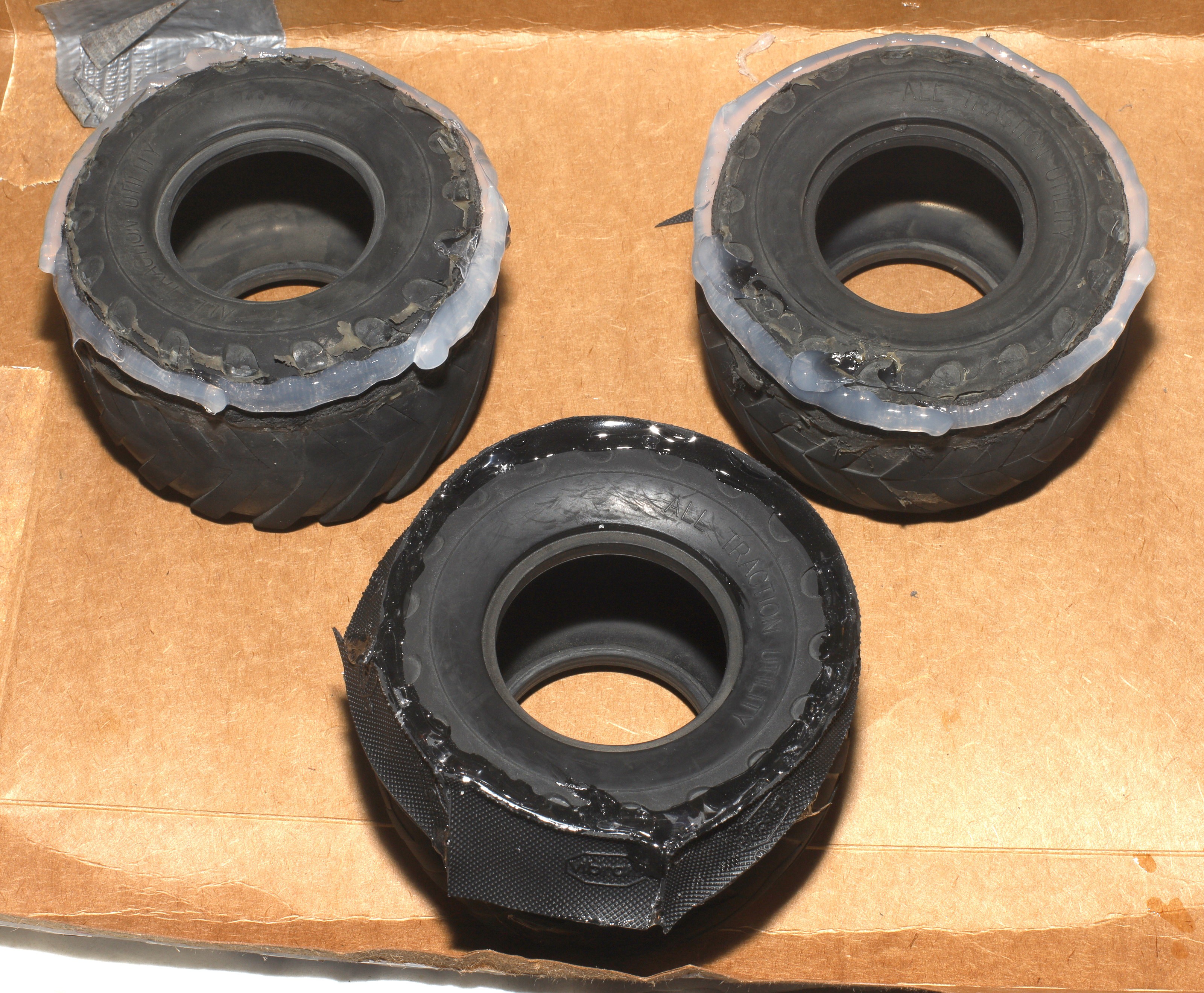
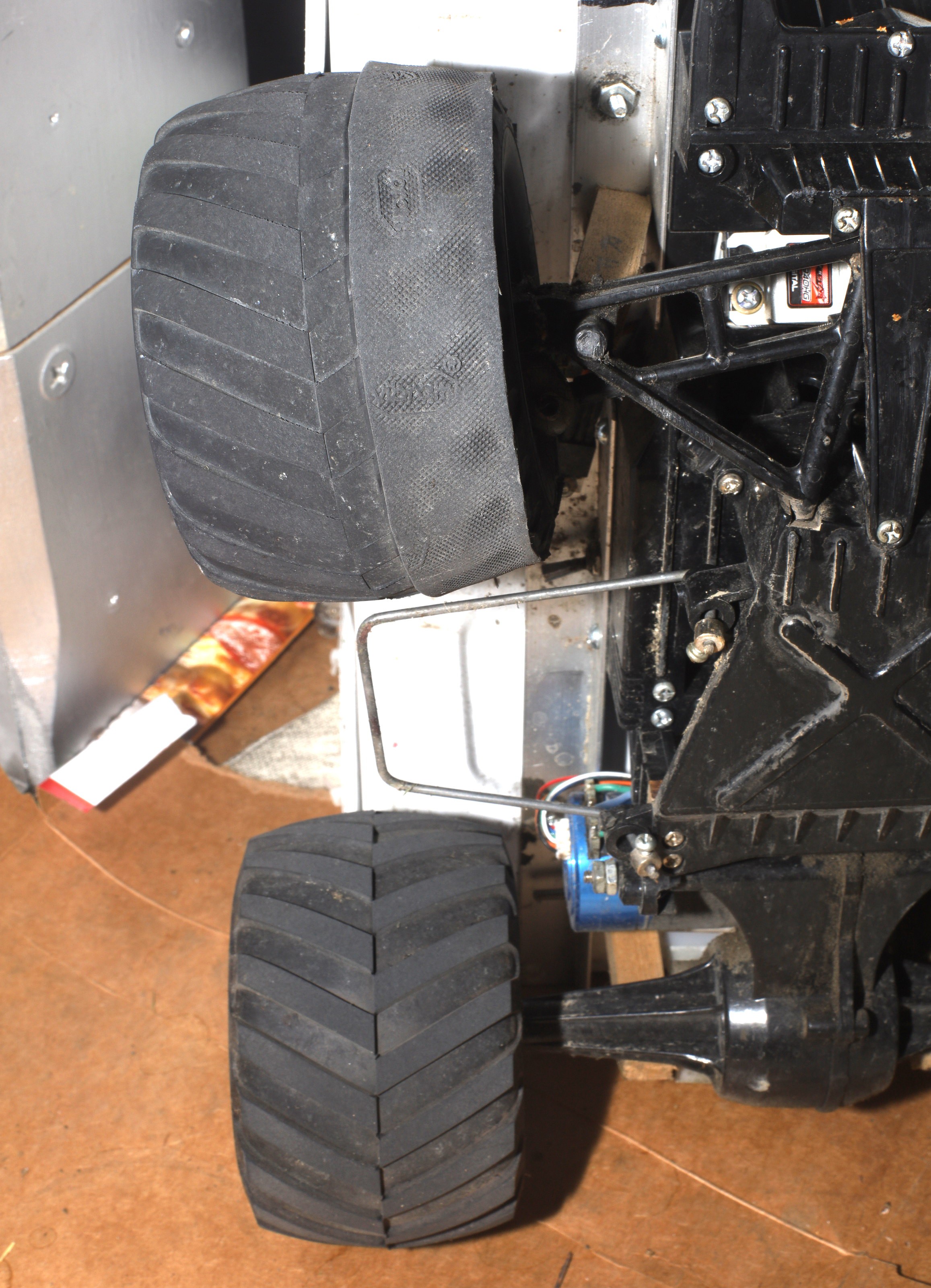
In the face of worn nylon straps, another phase of tire coatings began. Aquarium sealer was the absolute toughest adhesive lions ever saw but had trouble adhering to the tires. Vibram rubber showed similar wear to nylon. There was a trend with nylon where impregnating it with E6000 made it more robust. To save money, later nylon straps weren't impregnated with E6000, which may have made it wear out faster. Using 1" wide straps is definitely better.
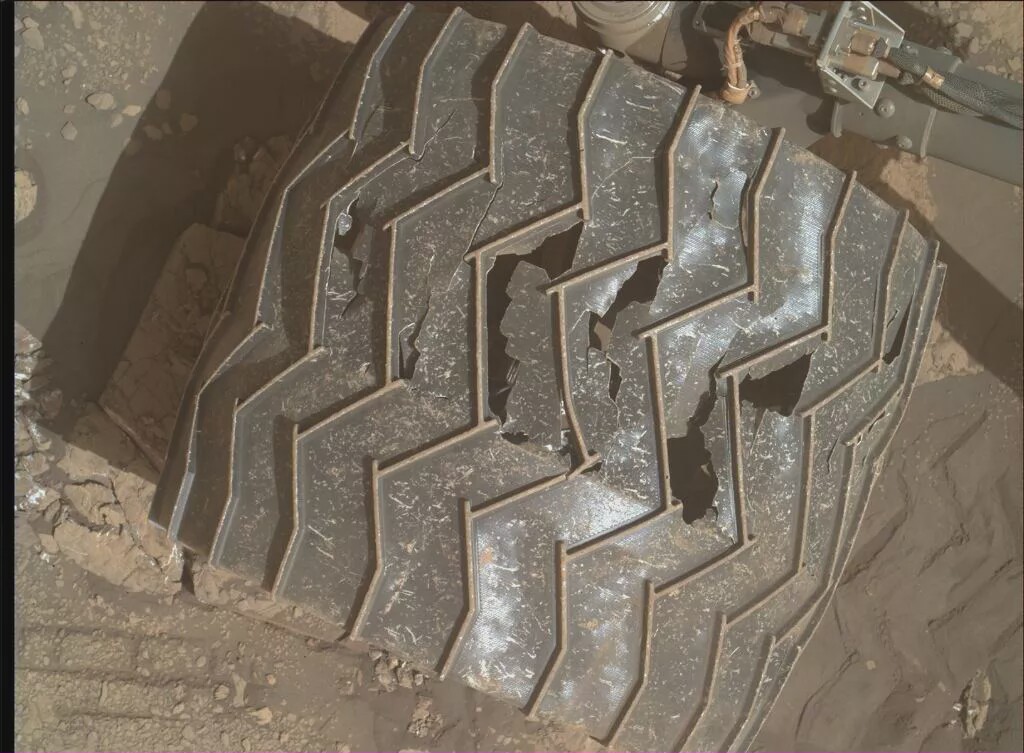
The news last covered the Mars rover tire wear in 2019. After traveling 13 miles, it was much more beat up than lion tires after 100 miles. Lions can get hundreds of miles out of tires by frequently replacing nylon straps, but the idea is to reduce the manetenance.
Then, it was time to rebuild the transmission.
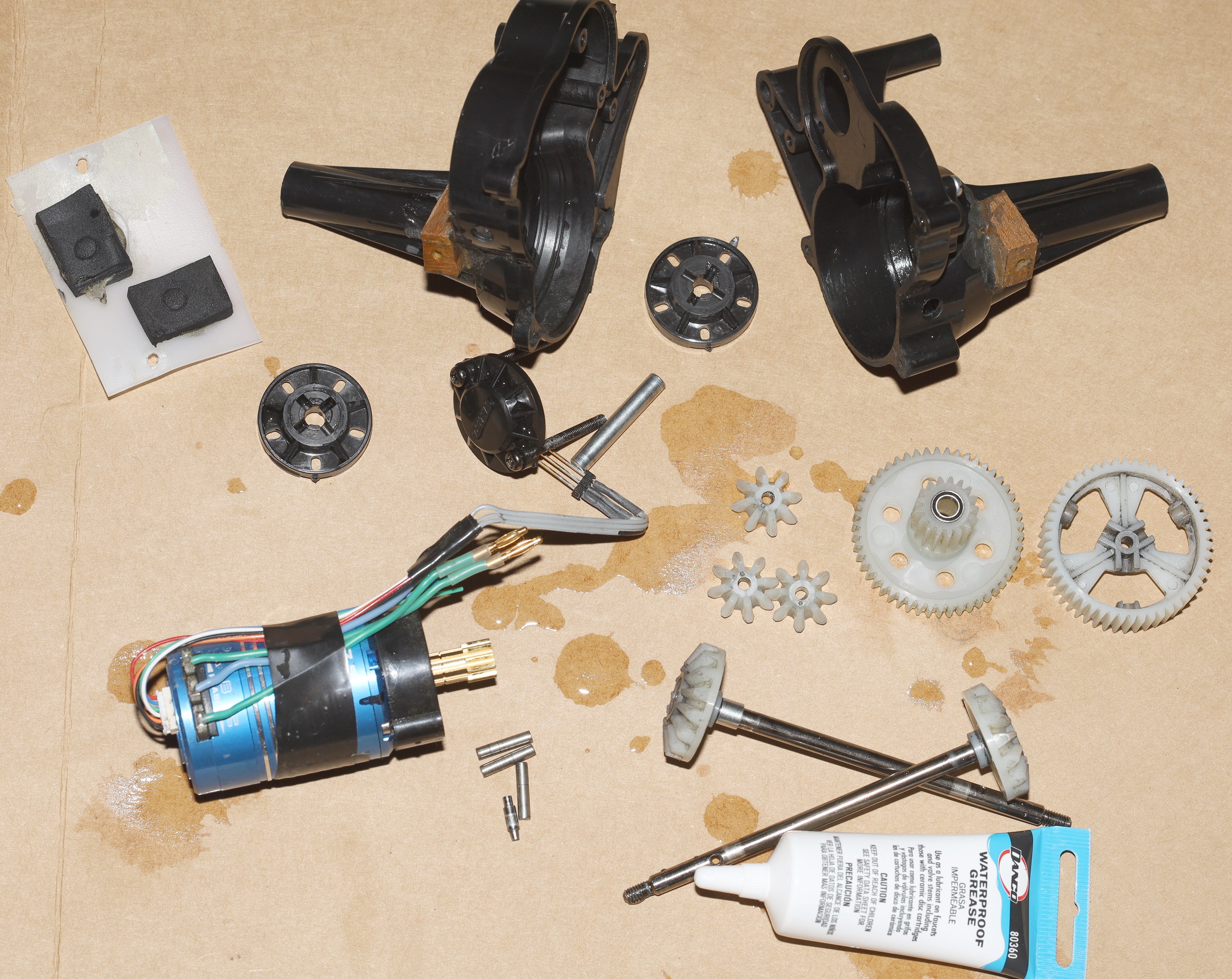
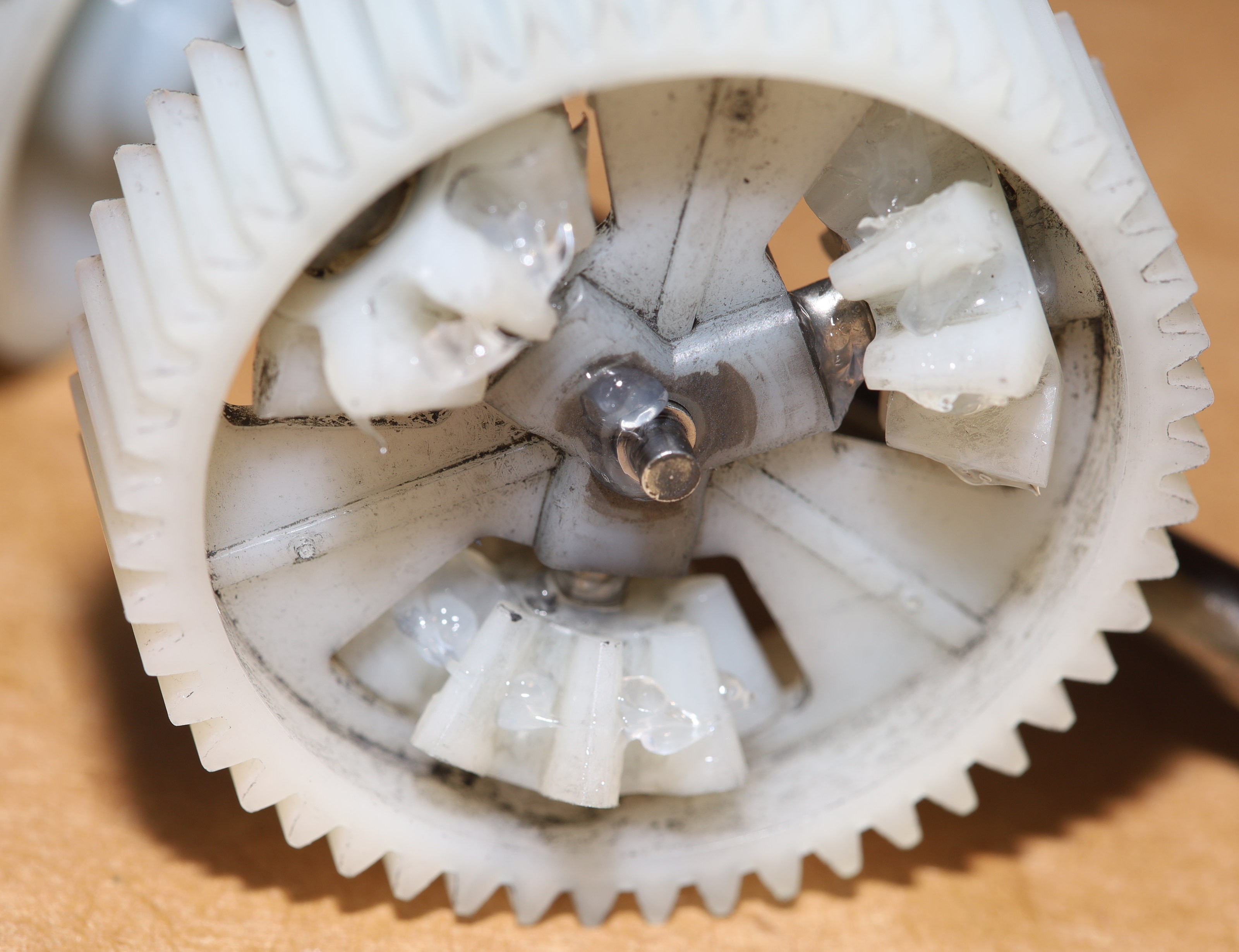
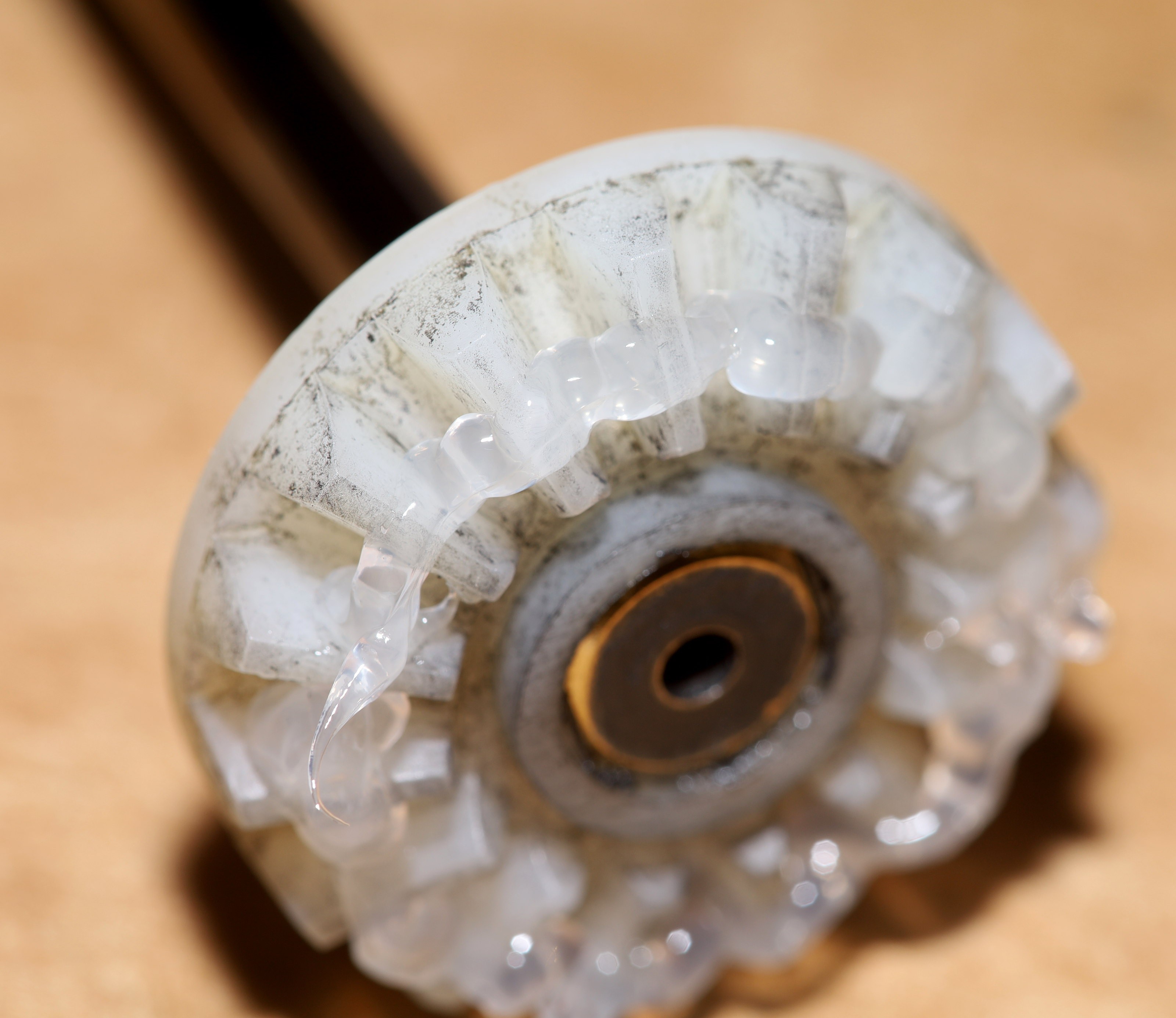
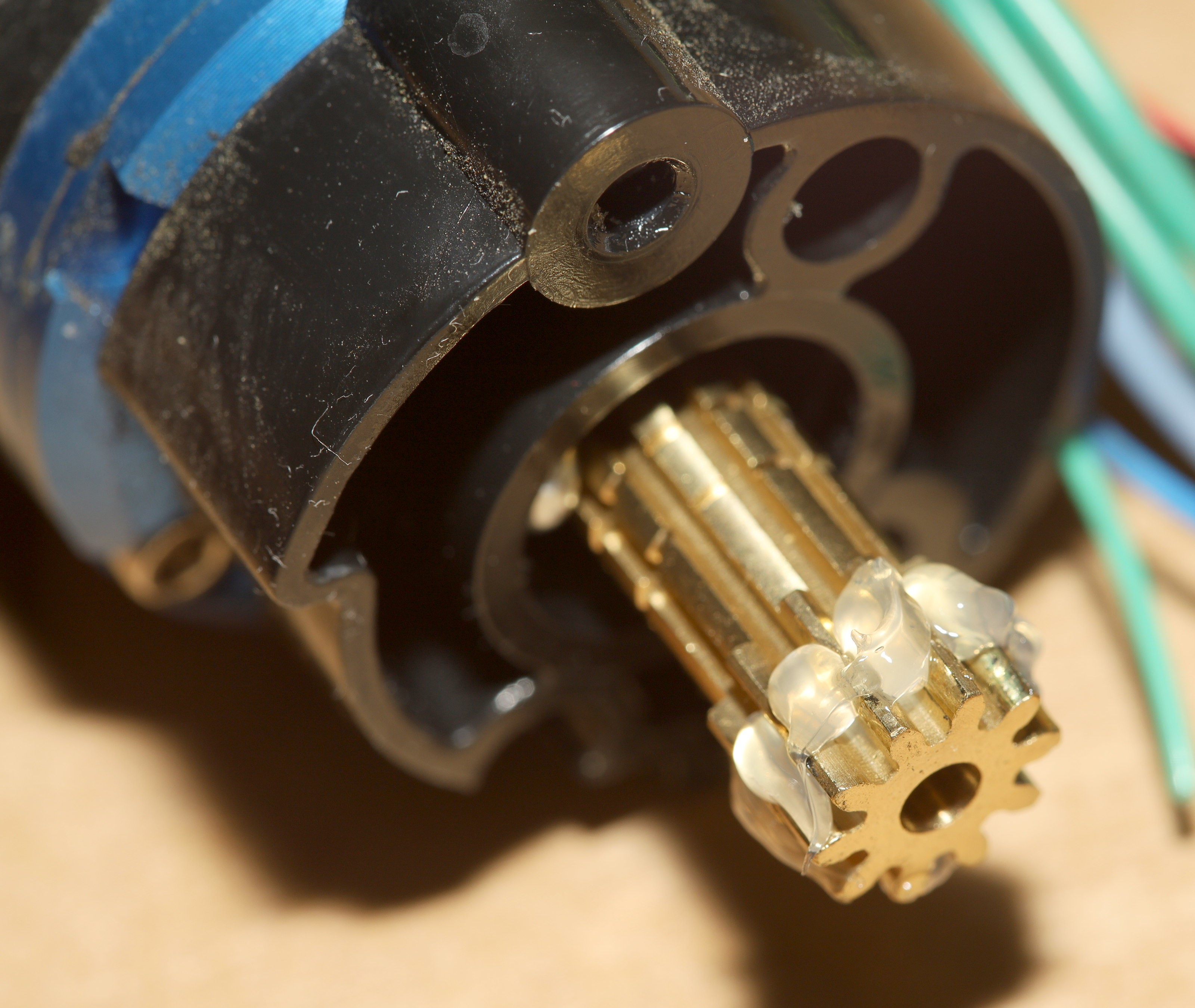
The mane interest was applying a new grease to try to reduce the noise & to increase the manetenance interval. After at least 15 years, lions finally narrowed down the ideal lubrication for plastic gears to silicone grease. It's not sold in the lubricant sections of any stores. It doesn't show up in any searches for axle grease. It's only in searches for plumbing grease. This is the transparent grease used in plastic toys & plastic servo gears. The key ingredient is Polydimethylsiloxane.
As usual for grease, the 1st few miles were a lot quieter, followed by a gradual return to the usual noise. Range wasn't abnormally affected.
UPDATE:
Silicone grease eventually became a lot louder than stock & decreased efficiency. It appears to create an adhesive layer on the gears, rather than help them glide. This may actually not be the grease in toys or it might be an excessively viscous version.
Aquarium sealer on the tires wore down faster than vibram rubber, but it managed to stay stuck to the tires. Vibram rubber actually did pretty well compared to everything else. Still need to try kevlar.
 lion mclionhead
lion mclionhead
Discussions
Become a Hackaday.io Member
Create an account to leave a comment. Already have an account? Log In.